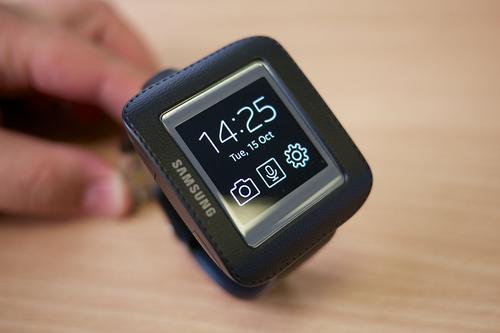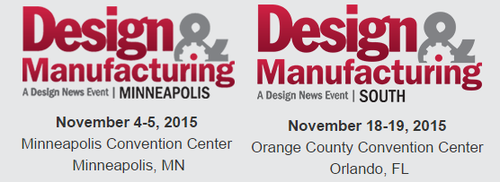Breaking Through What's Holding Back Truly Mass Adoption of Wearables
November 4, 2015

It is estimated that by 2019, there will be more than 455 million wearable devices. With that intense influx will come competition among device makers, so how can a wearable device continually differentiate itself while combating the diffusion of innovation cycle?
The diffusion of innovation cycle is made up of five different demographics and illustrates how each demographic adopts new technologies.
Innovators and early adopters like to take risks, and they will purchase new products in order to be classified as one of the first owners of a new technology.
Early majority represents those who weren't willing to buy the first-generation product hot off the market but are willing to try the second-generation product once the kinks are worked out.
Late majority and laggards are typically those that are not risk-takers and have settled with the technology they own already until that technology is so out of date they are forced to update.
So with that in mind, why do most modern wearables fail to make it past the early adopters stage?

There is no perfect wearable ... yet
Many companies have experienced the period of trial-and-error, where their first- and second-generation technologies were outperformed in a matter of months and replaced by the third-generation product line or by a competitor that offered a stronger product. In those cases, the diffusion of innovation cycle could not be completed before something better came along and took over ownership of market share. Every wearable company -- whether it's Apple, Fitbit, or Pebble -- has gone through multiple generations of products without finding that perfect fit for consumers.
As we move into the future of wearables, devices will continue to cover a widespread number of industries, such as sports/fitness, infotainment, medical, enterprise, and many others. This widespread number of industries means that there are many different usage models, and one size does not fit all. The challenge of finding the right balance between battery life, ease of use, and a reasonable price point -- along with protecting privacy -- will remain the same. To add to this, the wearable device must also provide meaningful value and impact to the user in order for it to be used regularly instead of being tossed into a drawer after a few months.
Creating the "perfect" wearable
Designers need to overcome the challenge of creating a simple, consolidated, reliable, visually compelling, and impactful product with long-lasting battery life that falls at the right price point. These are, by far, the hardest challenges wearables face today. Finding the equilibrium in this crazy balancing act will create the wearable device people cannot live without. Think about smartphones. If you leave for work and forget your phone, you go home and get it. But if you forget your wearable, you'll most likely deal with going through your day without it.
What about my personal data?
The job of a wearable doesn't stop at design. How its data is stored, analyzed, and made into useful information is also important. Consumers are more concerned than ever about understanding who controls their data and how it's being protected.
READ MORE DESIGN NEWS ARTICLES ON WEARABLES:
Let's again take a fitness wearables as an example: Every day it tracks the number of steps you take, your sleep patterns, the calories you burn, and more. Seeing a notification pop up telling you that "You Achieved Your Goal Today!" adds positive reinforcement to your extra effort. Providing visibility into where information is going, who can see the information, and just what is being collected will build trust with consumers. Doing something with that data to provide a closed feedback loop to consumers will then drive consistent and committed usage of the wearable device.
The wearables ecosystem
As you can see, there are many factors in creating wearable devices and bringing them to market. The ecosystem to support this market includes component manufacturers, OEMs and start-up companies, mechanical designers, security experts, and analytics and cloud services, to name a few. It's critical for different companies to connect the dots and pull together a complete solution.
So who will come out on top?
As the wearable market itself matures, we see early disrupters like FitBit and Pebble go head-to-head with household brands like Apple and Google for market share. Either way, innovation or the ability to execute are skills these companies have to invest in. I have no doubt that these issues will be addressed and this market will move past the early adopter phase.
Sujata Neidig has over 20 years of experience in the semiconductor industry and has served in a variety of roles ranging from product engineering to marketing and business development. Sujata is the Americas Business Development Manager at Freescale Semiconductor and is responsible for driving the company's processors and connectivity leadership and growth. Prior roles include business development for the consumer market and product marketing for Freescale's i.MX applications processors. She also represents Freescale as the Vice President of Marketing for Thread Group, which provides an IP-based wireless mesh networking protocol specifically for the connected home. She earned a Bachelor of Science in Electrical Engineering from the University of Texas at Austin.
[image via Wikipedia]
Like reading Design News? Then have our content delivered to your inbox every day by registering with DesignNews.com and signing up for Design News Daily plus our other e-newsletters. Register here!

Design News will be in Minneapolis and Orlando in November! Design & Manufacturing Minneapolis will take place Nov. 4-5, while Design & Manufacturing South will be in Orlando Nov. 18-19. Get up close with the latest design and manufacturing technologies, meet qualified suppliers for your applications, and expand your network. Learn from experts at educational conferences and specialty events. Register today for our premier industry showcases in Minneapolis and Orlando.
About the Author(s)
You May Also Like


.jpg?width=300&auto=webp&quality=80&disable=upscale)


